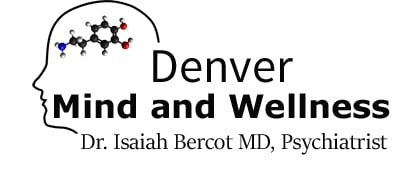
What is Panic Disorder?
This condition is characterized by recurring panic attacks. Common symptoms of a panic attack include racing heart, trembling, nausea, sweating, shortness of breath, dizziness, chest pain, tingling or numbness, hot flushes, and fear of dying. Panic attacks occur suddenly and are usually accompanied by intense fear or discomfort. They reach a peak within minutes but can last hours. Panic disorder is relatively common and affects an estimated 1 in 75 people. People with panic disorder often live in fear and anxiety of when the next attack will happen.
Fortunately, even though the symptoms are quite scary and often severe this condition responds well to treatment. Reaching out and finding a provider can often be the hardest part of reducing symptoms and getting back a high quality of life.

What causes panic Disorder?
The condition is thought to be caused by a mixture of genetic predisposition and environmental factors such as stress and life transitions.

Treatment for panic disorder
There are a variety of treatment options for panic disorder including both therapy and medication. Cognitive Behavioral Therapy (CBT) is the most common form of therapy for panic disorder and is aimed at changing thoughts and actions to better understand and control panic attacks.
On the medical side we have a very large array of options both to help prevent panic attacks from occurring, and to help alleviate the symptoms when a panic attack does happen. Below is a list of common mediations that I use for the treatment of panic disorder:
Selective Serotonin Reuptake Inhibitors (SSRIs). This class of medication acts to increase serotonin which can have a calming affect in the brain and reduce the frequency of panic attacks. Examples of SSRIs include Zoloft, Lexapro, and Prozac.
Selective Serotonin Norepinephrine Reuptake Inhibitors (SNRIs). This class of medication acts to increase both serotonin and norepinephrine and can help reduce the frequency of panic attacks and improve energy.

Benzodiazepines. These medications include Ativan, Zanax, and Klonopin and can be used both for reducing the frequency of panic attacks and for alleviating a panic attack that is already in progress.
Hydroxyzine. This medication is an antihistamine that is commonly used to relive or terminate a panic attack that is already in progress.
It is also important to maintain a well balanced and healthy lifestyle in order to help prevent panic attacks. Getting regular exercise, reducing the intake of alcohol or stimulants, getting regular sleep, and meditation can all help in the treatment of panic disorder.

